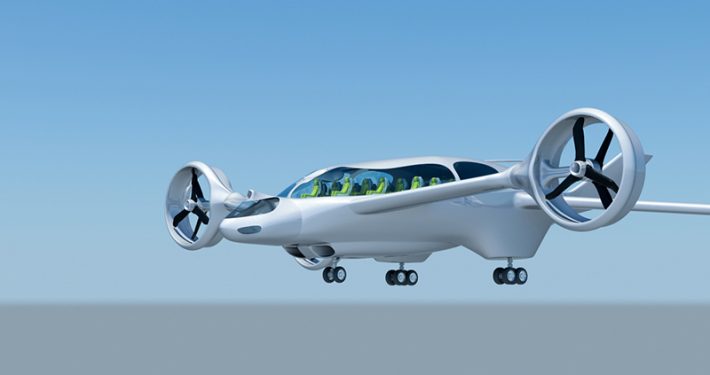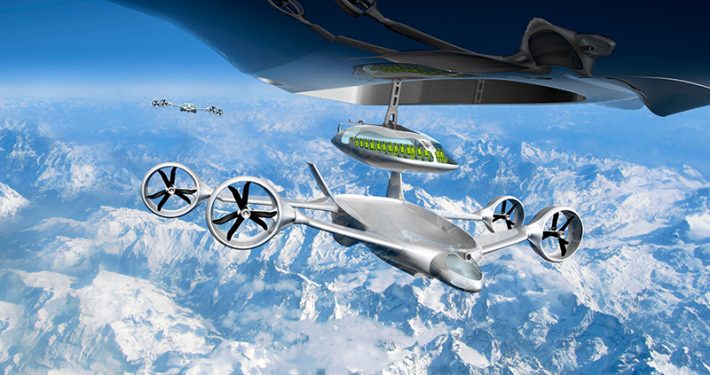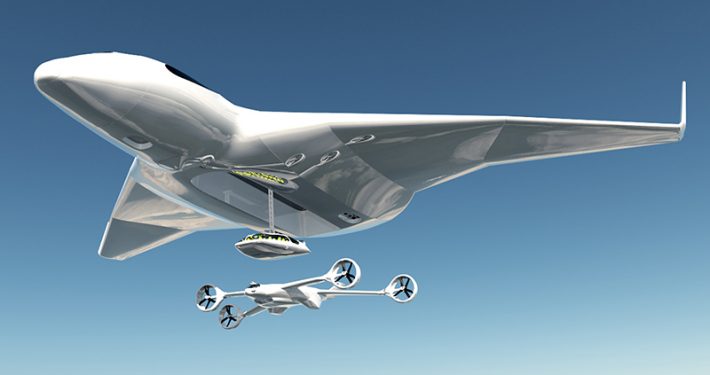Large aircraft that fly fixed routes and smaller aircraft that take on additional passengers and fuel en route. A futuristic image, certainly, yet a consortium, led by NLR, received a European research grant in 2011 to seriously study the potential of such cruiser-feeder operations for civil aircraft.
The concept involves a cruiser aircraft, flying at cruising altitude above mainports, such as Amsterdam Airport Schiphol. Smaller aircraft, the feeders, pick up passenger modules, which they transport to the cruiser. At the same time baggage, supplies and waste are exchanged between the cruiser and feeder. The cruiser then continues flying for thousands of kilometers more, with this procedure being repeated along the way.
The expectation is that, in the distant future, a form of this cruiser-feeder operation will result in substantial fuel savings. This scenario can be made plausible when, as a special case, only fuel is exchanged between a cruiser and a feeder. In such cases, fuel savings of 31% are expected based on flights of 6,000 nautical miles (approximately 11,000 km) that carry 250 passengers, with one refueling midway en route. Compared to all the other technologies aimed at making aircraft more fuel-efficient, this particular operation offers huge potential savings.
The research is focusing on three main bottlenecks. Which cruiser-feeder concepts are possible? What exactly is required such that the cruiser-feeder concept will fully meet the airworthiness requirements that apply to civil aviation? How significant are the potential benefits? In order to answer these questions, a design study will be conducted for the cruiser and the feeder. In addition, the research will focus on the automation of the docking, a key requirement for guaranteeing safety. Finally, flight simulation experiments will be conducted to study the cruiser-feeder concept.



